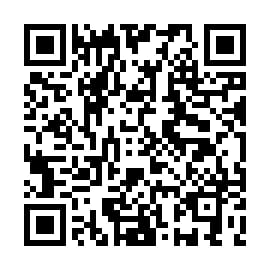Evaluation of photovoltaic collectors for supplementary energy supply in remotely manned aircraft
Abstract
The use of solar panels in remotely piloted aircraft (ART) or drones is not very common, and although it has been studied for about 20 years, it is only in recent years that it has been studied more deeply. In this article, an exploratory review of related technologies is made in order to observe the technological trends on the use of solar energy for ART's power supply. For this purpose, a theoretical conceptualization of the technological requirements was carried out, then a keyword search was performed in scientific publications related to the research topic and analyzed with Bibliometrix. The results show the main related concepts, the components for implementation, uses and operation as a complement to other traditional and emerging power sources. As a conclusion, the feasibility of using photovoltaic energy for ART's is presented; although these studies need to be continued, a conceptual basis is also provided that will serve for future work.
Downloads
References
Alfaro-Mejía, E., Loaiza-Correa, H., Franco-Mejía, E., Restrepo-Girón, A. D., & Nope-Rodríguez, S. E. (2019). Dataset for recognition of snail trails and hot spot failures in monocrystalline Si solar panels. Data in Brief, 26, 104441. https://doi.org/https://doi.org/10.1016/j.dib.2019.104441 PMid:31667220 PMCid:PMC6811936
Aurbach, D. (2000). Review of selected electrode–solution interactions which determine the performance of Li and Li ion batteries. Journal of Power Sources, 89(2), 206–218. https://doi.org/https://doi.org/10.1016/S0378-7753(00)00431-6
Cole, S. K., & DeYoung, R. J. (2012). Preliminary Design of a Solar Photovoltaic Array for Net-Zero Energy Buildings at NASA Langley. In NASA Center for AeroSpace Information (CASI). Reports. NASA/Langley Research Center. https://login.bdigital.sena.edu.co/login?url=https://www.proquest.com/reports/preliminary-design-solar-photovoltaic-array-net/docview/2128378779/se-2?accountid=31491
Correa Castillo, M. Á. (2018). Diseño y construcción de un sistema de aprovechamiento de energía solar para el mejoramiento de la autonomía de un Drone [Universidad del Valle]. https://bibliotecadigital.univalle.edu.co/handle/10893/16565
Dochev, I. N., Docheva, L. E., & Manev, S. (2018). Embedding of Communication and Measurement Equipment in Drones. 2018 IX National Conference with International Participation (ELECTRONICA), 1–4. https://doi.org/10.1109/ELECTRONICA.2018.8439615
Elliott, F. W., & Piszczor, M. F. (2016). Solar Power Generation in Extreme Space Environments. In NASA Center for AeroSpace Information (CASI). Misc. Resources. NASA/Langley Research Center. https://login.bdigital.sena.edu.co/login?url=https://www.proquest.com/other-sources/solar-power-generation-extreme-space-environments/docview/2128048493/se-2?accountid=31491
Fee, D., Bridgeman, J., Cocconi, A., & Grim, C. (2005). AC Propulsion’s Solar Electric Powered SoLong UAV. acpropulsion.com
Göhlich, D., Fay, T.-A., Jefferies, D., Lauth, E., Kunith, A., & Zhang, X. (2018). Design of urban electric bus systems. Design Science, 4, e15. https://doi.org/DOI: 10.1017/dsj.2018.10
Gong, A., & Verstraete, D. (2017). Design and Bench Test of a Fuel-Cell/Battery Hybrid UAV Propulsion System using Metal Hydride Hydrogen Storage. https://doi.org/10.2514/6.2017-4867
HIGUCHI, Y., & BABASAKI, T. (2018). Failure detection of solar panels using thermographic images captured by drone. 2018 7th International Conference on Renewable Energy Research and Applications (ICRERA), 391–396. https://doi.org/10.1109/ICRERA.2018.8566833
Jakob, S., Zimmermann, R., & Gloaguen, R. (2017). The Need for Accurate Geometric and Radiometric Corrections of Drone-Borne Hyperspectral Data for Mineral Exploration: MEPHySTo—A Toolbox for Pre-Processing Drone-Borne Hyperspectral Data. In Remote Sensing (Vol. 9, Issue 1). https://doi.org/10.3390/rs9010088
Jung, S. (2020). Development and Verification of Hybrid Power Controller Using Indoor HIL Test for the Solar UAV. Energies, 13(8). https://doi.org/10.3390/en13082110
Khonji, M., Alshehhi, M., Tseng, C.-M., & Chau, C.-K. (2017). Autonomous Inductive Charging System for Battery-Operated Electric Drones. Proceedings of the Eighth International Conference on Future Energy Systems, 322–327. https://doi.org/10.1145/3077839.3078462
Kim, J., Kim, S., Jeong, J., Kim, H., Park, J., & Kim, T. (2019). CBDN: Cloud-Based Drone Navigation for Efficient Battery Charging in Drone Networks. IEEE Transactions on Intelligent Transportation Systems, 20, 4174–4191. https://doi.org/10.1109/TITS.2018.2883058
Lee, S., An, K., Jeon, B. D., Cho, K. Y., Lee, S. J., & Seo, D. (2018). Detecting faulty solar panels based on thermal image processing. 2018 IEEE International Conference on Consumer Electronics (ICCE), 1–2. https://doi.org/10.1109/ICCE-China.2018.8448635 https://doi.org/10.1109/ICC.2018.8422589 https://doi.org/10.1109/ICC.2018.8422166 https://doi.org/10.1109/ICCE.2018.8326176
LIU Li ZHANG Xiaohui, HE Yuntao, C. A. O. X. (n.d.). Review of development of light and small scale solar/hydrogen powered unmanned aerial vehicles. In ACTA AERONAUTICAET ASTRONAUTICA SINICA (Vol. 41, Issue 3, p. 623474). http://hkxb.buaa.edu.cn
Mesbahi, T., Rizoug, N., Bartholomeüs, P., Sadoun, R., Khenfri, F., & Moigne, P. Le. (2017). Optimal Energy Management for a Li-Ion Battery/Supercapacitor Hybrid Energy Storage System Based on a Particle Swarm Optimization Incorporating Nelder–Mead Simplex Approach. IEEE Transactions on Intelligent Vehicles, 2(2), 99–110. https://doi.org/10.1109/TIV.2017.2720464
Papis, Karolina, Figaj, Rafal, Ku’s, Jakub, Zoladek, Maciej, & Zajac, Michal. (2020). Application of photovoltaic cells as a source of energy in unmanned aerial vehicle (UAV) - case study. E3S Web Conf., 173, 2002. https://doi.org/10.1051/e3sconf/202017302002
Ridwan, I., & Alfindo. (2019). The effect of use of solar panels on micro scale fixed-wing UAV type as a power recharging system. AIP Conference Proceedings, 2180(1), 20044. https://doi.org/10.1063/1.5135553
Vidales, H. M. G. (2013). Design, Construction and Test of the Propulsion System of a Solar UAV.
Zhu, L., Zhang, J., Wang, D., Wang, R., Sun, Y., & Wu, C. (2021). Optimal design and photoelectric performance study of micro-lens light trapping structure for CIGS thin film solar cell in BIPV. Renewable Energy, 177, 1356–1371. https://doi.org/10.1016/j.renene.2021.06.036
ZHU Lihong HU Wentao, LI Chuan, FU Zengying, YU Zhihang, LIU Zhengxin, S. U. N. G. (n.d.). Key technology and development trend of energy system in solar powered unmanned aerial vehicles. In ACTA AERONAUTICAET ASTRONAUTICA SINICA (Vol. 41, Issue 3, p. 623503). http://hkxb.buaa.edu.cn
Copyright (c) 2021 Yilver Orley Mendoza Prieto, Sebastián Sopo Piraquive, Edison Alexis Torres Garzón (Autor/a)

This work is licensed under a Creative Commons Attribution-NonCommercial-NoDerivatives 4.0 International License.













